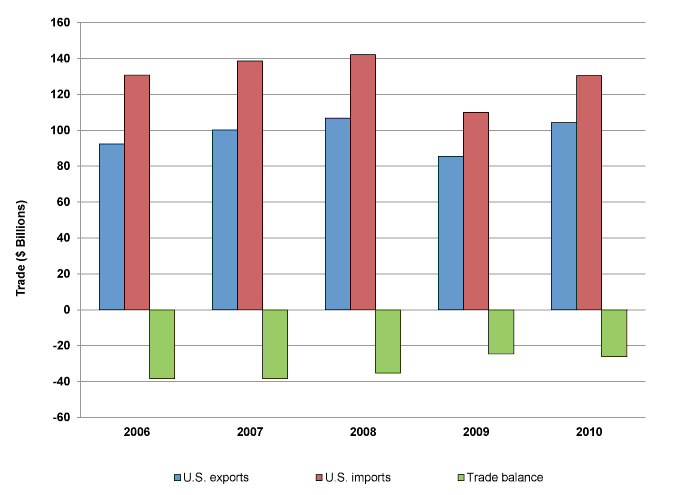View Section in Publication :: Return to Overview

Key Economic Trends
- The U.S. merchandise trade deficit for machinery rose by $1.5 billion (6 percent), partly due to increased business spending for capital equipment and machinery used in infrastructure projects. At the same time, expanding demand in the East Asian and neighboring North American markets, along with the depreciation of the U.S. dollar relative to most advanced-country currencies, boosted export growth in this sector.
- U.S. exports of machinery increased by $19.0 billion (22 percent), driven by increased consumption in Taiwan, Korea, China, and Germany. Collectively, these four major trading partners accounted for 43 percent of total sector exports in 2010. A rebound in the global economic system, particularly in advanced Asian economies, led to rising demand for U.S. exports of machinery.
- The rise in U.S. machinery imports continued to be broad-based: semiconductor equipment, textile machinery, nonelectric-powered hand tools, and taps, cocks, and valves registered the fastest growth within this sector in 2010. The four leading supplier countries for machinery in 2010 were China, Mexico, Japan, and Germany. Collectively, these four major trading partners accounted for 69 percent of total import growth in this sector 2010.
Trade Shifts from 2009 to 2010
- U.S. trade deficit: Increased by $1.5 billion (6 percent) to $26.1 billion
- U.S. exports: Increased by $19.0 billion (22 percent) to $104.4 billion
- U.S. imports: Increased by $20.4 billion (19 percent) to $130.5 billion
Selected Product Shifts
USITC Publications
- Multifunction Products: Industry and Trade Summary, USITC Publication ITS-03, December 2009
- Wind Turbines: Industry and Trade Summary, USITC Publication ITS-02, June 2009
Other Resources
- Gardner Publications Inc.: Metalworking Insiders' Report
- Metal Center News Online: 2009 Directory of Toll Processors
- National Association of Home Builders
- National Association of Manufacturers: The Manufacturing Institute
- The Association of Electrical and Medical Imaging Equipment Manufacturers (NEMA)
- Precision Manufacturing Institute
